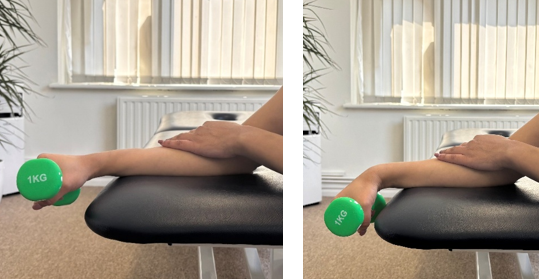Repetitive Strain Injuries of the wrist and hand
In today’s fast-paced world, repetitive hand and wrist movements have become a routine part of daily life - whether you're typing, using a smartphone, or performing manual tasks at work. Over time, these repeated motions can lead to a condition known as Repetitive Strain Injury (RSI). But what is it and how can we help?
What is repetitive strain injury?
Repetitive Strain Injury refers to pain and discomfort in the muscles, nerves, and tendons caused by repetitive movement and overuse. It most commonly affects the wrists and hands, especially in individuals who perform repetitive tasks without adequate breaks, ergonomics, or support.
What are the symptoms of RSI in the wrist and hand?
Symptoms can develop gradually and may include:
Aching, throbbing, or pain in the wrist or hand
Tingling or numbness (often associated with nerve involvement)
Weakness in grip strength or co-ordination
Stiffness, especially after periods of rest
Swelling or tenderness
Reduced range of motion
If left untreated, RSI can become chronic and severely impact daily functioning.
What actually causes repetitive strain injury?
RSI is usually not the result of one specific incident but builds up over time due to:
Prolonged computer use (typing, mouse work)
Repeated use of tools or machinery
Frequent texting or gaming
Poor ergonomics or posture
Insufficient rest or recovery between repetitive tasks
Vibration from tools or equipment
Can physiotherapy help repetitive strain injury?
Physiotherapy plays a crucial role in both treating and preventing RSI. A trained physiotherapist can:
Identify the root cause of your symptoms
Relieve pain through manual therapy, soft tissue massage, and mobilisation techniques
Guide you through targeted exercises to strengthen muscles and improve flexibility
Provide ergonomic and postural advice for workstations and daily activities
Use modalities like ultrasound or TENS to reduce inflammation
Educate you on pacing and load management to avoid flare-ups
What do we do at First Line Physio to help RSI?
We understand how disruptive RSI can be to your life and work. Our team of skilled physiotherapists offers a personalised approach to treatment and recovery. Here's how we support you:
Comprehensive assessment: We begin with a detailed evaluation of your symptoms, movement patterns, and daily activities to pinpoint the exact cause.
Hands-on therapy: Our therapists use evidence-based manual techniques to ease pain, improve mobility, and speed up recovery.
Tailored exercise programmes: You’ll receive a custom rehab plan that fits your condition, lifestyle, and goals - whether you're a desk worker, tradesperson, or athlete.
Workstation & ergonomic advice: We help you adjust your work or home setup to support long-term wrist and hand health.
Education & prevention: We believe in empowering you with knowledge and strategies to reduce the risk of re-injury.
What exercises can I do for repetitive strain?
1. Wrist extension with dumbbell
Sit on a bench or chair with your forearm resting on your thigh or a flat surface, palm facing up.
Hold a light dumbbell in your hand, letting your wrist hang just past the edge of your support.
Slowly curl the dumbbell upward by bending only at the wrist. Pause briefly at the top, then lower the weight back down in a controlled manner. Keep your forearm stationary throughout.
Repeat 10-15 times, three times a day.
2. Wrist flexion with dumbbell
Sit on a bench or chair with your forearm resting on your thigh or a flat surface, palm facing down.
Hold a light dumbbell in your hand, wrist just beyond the edge of the support.
Lower the dumbbell by flexing your wrist down. Pause at the bottom, then slowly raise it back up. Keep the rest of your arm still to isolate the wrist flexors.
Repeat 10-15 times, three times a day.
This is absolutely not written to substitute medical advice, and it is always important to see a qualified healthcare professional for a formal diagnosis. If any of the exercises cause pain during or after the exercise, discontinue and consult a physiotherapist.






